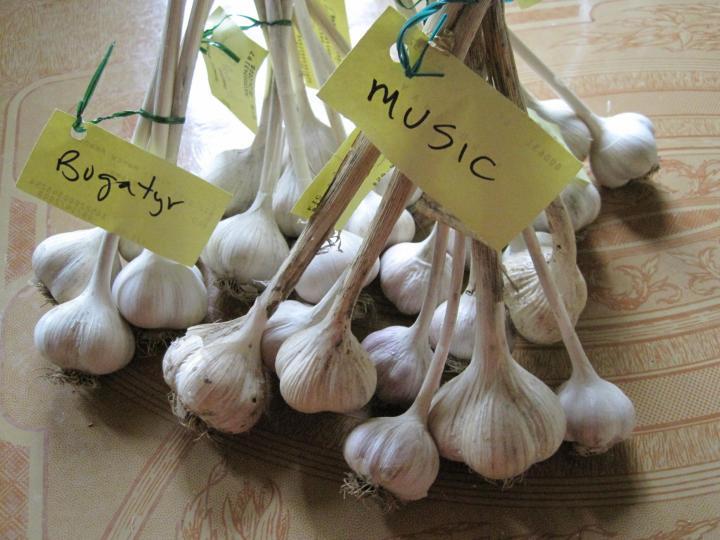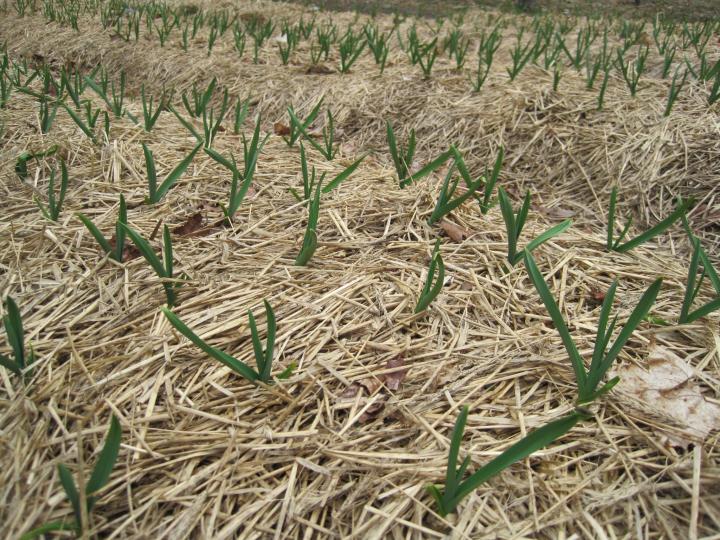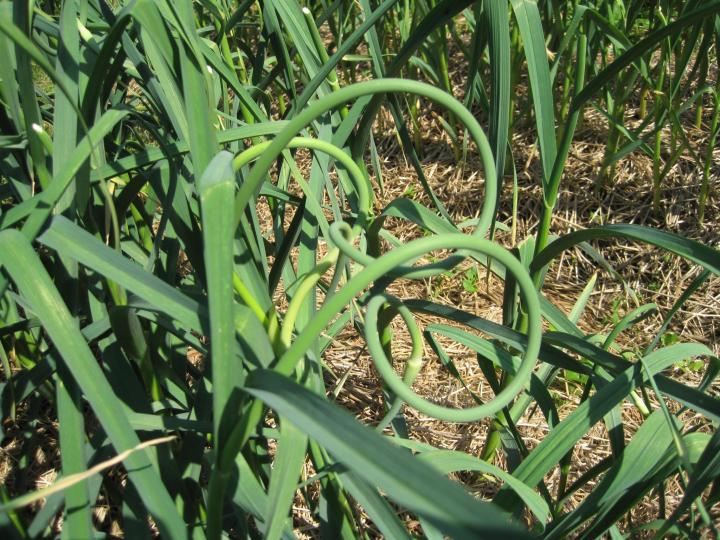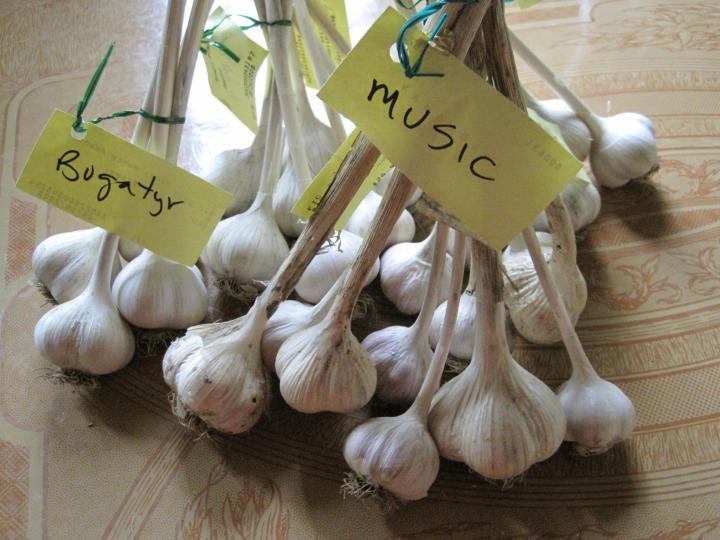





 Robin Sweetser
Robin Sweetser
Fall is traditionally the time to plant garlic in many regions. Just like onions and other plants in the allium family, garlic is sensitive to daylength and matures during the longest days of summer. Fall planting gives it a jump start on the growing season and it will be one of the first things to come up in the garden next spring.
Garlic is extremely easy to grow but good soil preparation is necessary if you want to produce the best and biggest bulbs. They need deeply cultivated, well-drained, rich soil with a pH of 6.4-6.8. Add 2-3 inches of compost and well-rotted manure to the bed before planting. Use quality seed garlic and plant several different varieties just in case one does poorly. Separate the cloves no more than 48 hours before planting to keep them from drying out. The largest cloves will produce the biggest bulbs. Plant individual cloves, peels intact, pointy end up, 2 inches deep and 6 inches apart. Mulch 5-8 inches deep with seedless straw. It will pack down over the winter to about 2 inches by spring and help to keep the weeds down during the growing season. Your garlic will form roots but little or no top growth before the ground freezes solid.

Early next spring it will be ready to grow, sending up tiny green shoots as soon as the ground thaws.
Not too many pests bother garlic but don’t plant it where you have had trouble with wireworms or nematodes. Disease is more of an issue in poorly drained soils. Feed the plants every other week with a liquid fish emulsion fertilizer from the time shoots emerge in early spring until June 1. Water is critical during the bulb forming stage in early summer so try for an inch a week, including rainfall. If you are growing hard neck garlic - the best type for the northeast - around the time of summer solstice your garlic will send up a seed stalk called a scape. This should be cut off to encourage the plants to put all their energy into bulb formation.

These stalks curl into a loop and are delicious. Chop them and add to salad, stir fry, soup, scrambled eggs, or any dish you want to enhance with a little garlic flavor. Buzzed in the blender with a little olive oil and parmesan cheese, they make especially good pesto. Leave one or two flower stalks standing to help you decide when to harvest your garlic. About four weeks prior to harvest the outer wrappers on the garlic bulbs start to dry so stop watering in July. Too much water at that stage can stain the wrapper or even cause mold.
Harvest your garlic around the end of July or early August, when the lower third to half of the leaves have turned brown and wilted but the upper leaves are still green. It can be tricky deciding exactly when to harvest so that is where the flower stalks can come in handy. If the leaves are starting to turn brown and the scapes uncurl and stand up straight it is time to harvest. Hang bunches of newly harvested garlic to dry in a cool, well ventilated, shady spot for 3-4 weeks to cure. After the leaves, roots, and outer wrappers are completely dry, brush off any loose soil, trim the roots to 1/4 inch, and cut the tops back to an inch or two above the bulb before storing. Under optimum conditions of near freezing temps and 65-70% humidity, hardneck garlic will keep for five months and softneck for 8 months.

Save your biggest cloves to replant for next year. Old timers say that garlic “learns” because it adapts to your growing conditions and improves each year. Grab life by the bulbs and plant some garlic this fall!
~ By Robin SweetserGet inspired by Robin Sweetser's backyard gardening tips. Robin has been a contributor to The Old Farmer's Almanac and the All-Seasons Garden Guide for many years. She and her partner Tom have a small greenhouse business and also sell plants, cut flowers, and vegetables at their local Farmer's Market.
Copyright © www.100flowers.win Botanic Garden All Rights Reserved